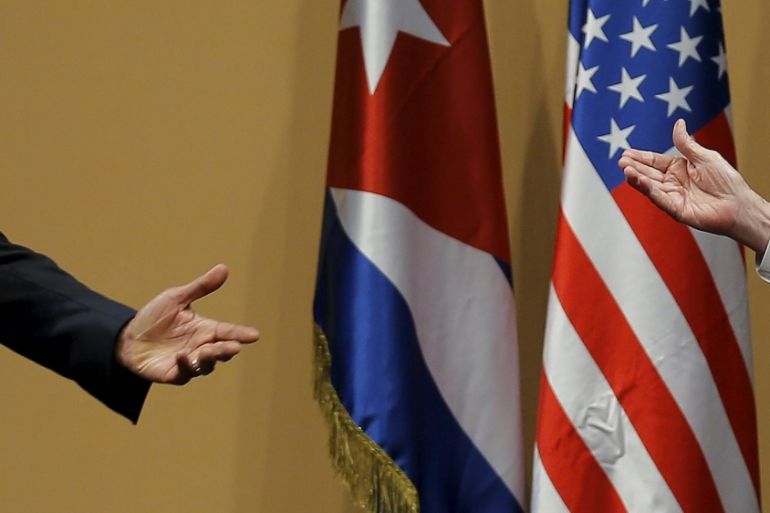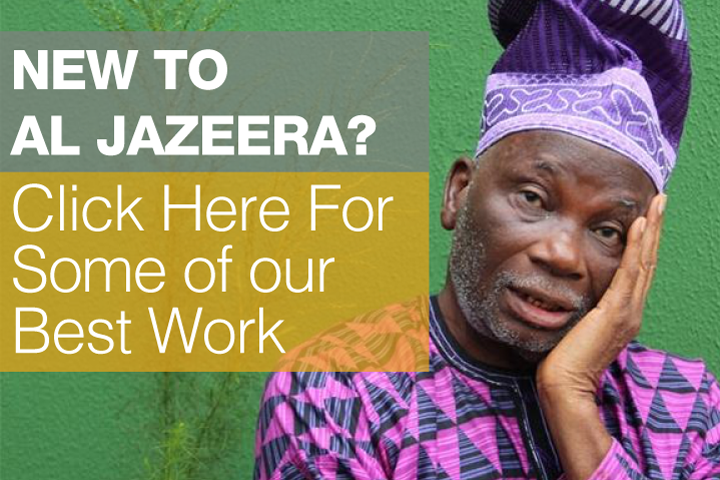Obama in Cuba: Smiles, speeches and history
Unclear if images of unity, or open encouragement for Cubans to seek change, will be US president’s legacy in Havana.

Flying back to Washington, DC, after four exhausting days covering President Barack Obama’s historic visit to Cuba, I recalled a passage in a book written by a former White House correspondent.
The correspondent, having broadcast a scathing story about President Ronald Reagan, entered the White House the next day expecting a blast from the president’s press secretary.
Keep reading
list of 4 itemsUS House approves aid package worth billions for Ukraine, Israel
Will India’s election be free and fair?
Togo approves constitutional reform changing how president is elected
But it never came. Instead, the spokesman thanked her – explaining that while her report had dealt with a number of damaging issues, the video footage was of the president smiling as he met elderly people.
|
|
“People only remember the pictures,” he told her.
The line perfectly sums up Obama’s Cuba visit and the photo opportunities with his counterpart, Raul Castro.
History will probably remember the images that were carefully choreographed, with each event designed to show that the US and Cuba are starting their relationship over, after more than a half century of active animosity.
The first official event was Obama laying a wreath at a memorial to 19th century revolutionary Cuban hero Jose Marti.
It had pomp and circumstance, but if you looked closer both sides were sending a message.
Obama was given a tour of the memorial by a man who helped embarrass the US by repelling the Bay of Pigs invasion, the US’ failed attempt to send a small army of Cuban exiles to overthrow the Castro government in the 1960s.
Obama responded by writing about Marti in the guestbook, putting: “His passion for liberty, freedom and self-determination lives on in the Cuban people today.”
The US would argue that Cubans are not free and cannot determine their own destiny.
Every time the two presidents got together it was all smiles.
REPORTER’S NOTEBOOK: Obama comes to Cuba
There was the tour, a major state dinner and a baseball game. President Castro even escorted the Obamas to the airport at the end of the trip, sending them off with a big wave and a grin.
It implied a message of unity, and perhaps that message would have held – if the pair had never opened their mouths.
White House officials had been very publicly calling for the two presidents to hold a press conference, standard practice every time the president travels outside the US.
A senior US official says they didn’t know if it would happen until the two leaders finally met and Castro agreed to take questions from the press on Monday.
|
|
The White House saw this as a huge victory. The Cuban people would see their leader directly challenged by the media. The US picked an American reporter of Cuban descent to ask a question.
He asked Castro, in English and Spanish, about political prisoners in Cuba.
The president responded bluntly, asking the reporter to give him a list of the alleged prisoners. The implication was clear: there are no political prisoners in his country.
Despite the denial, from Obama’s perspective that was a clear win, as the Cuban people saw their leader questioned by a reporter – without fear – about a very sensitive issue.
One US official was positively giddy the official Cuban newspaper reprinted the entire transcript of the interview.
But Castro didn’t let the US leader land all the blows, questioning Obama about his human rights record by highlighting the issues of racism, poverty and income inequality in the US.
It was an unusual moment. Not many other world leaders would stand next to the US president and be so openly critical.
For his part, Obama responded that he appreciates the criticism and dialogue is always good, leading many to think he would be hammered by Republicans back home for not firing back.
Then, he delivered his speech to the Cuban people on Tuesday, where he admitted the US has had, and continues to have, a problem with race relations.
Obama pointed out that when his Kenyan father moved to the US, it was illegal in many states for him to marry his white mother.
He went on to explain progress was made because people organised and protested and challenged their government.
Because of that fight, he – an African-American – was able to become the president of the United States, he said.
It was much closer than I thought Obama would ever get to encouraging the Cuban people to take to the streets and demand change.

And he told Castro, sitting in the audience, that he should not be afraid of his people.
As Air Force One went wheels up from Havana on Tuesday, it was clear that Obama’s three-day visit will go down in the history books.
But it is far from the end of the story.
Obama said it is no longer the policy of the US to seek the overthrow of the Castro government and the pictures were meant to show the two nations can be friends.
But his words clearly sent the message that Cuba needs to change and that Cubans should rise up and demand it.
Only history will tell if the visit will be remembered for the images of friendship, or the words that inspired change.
|
|